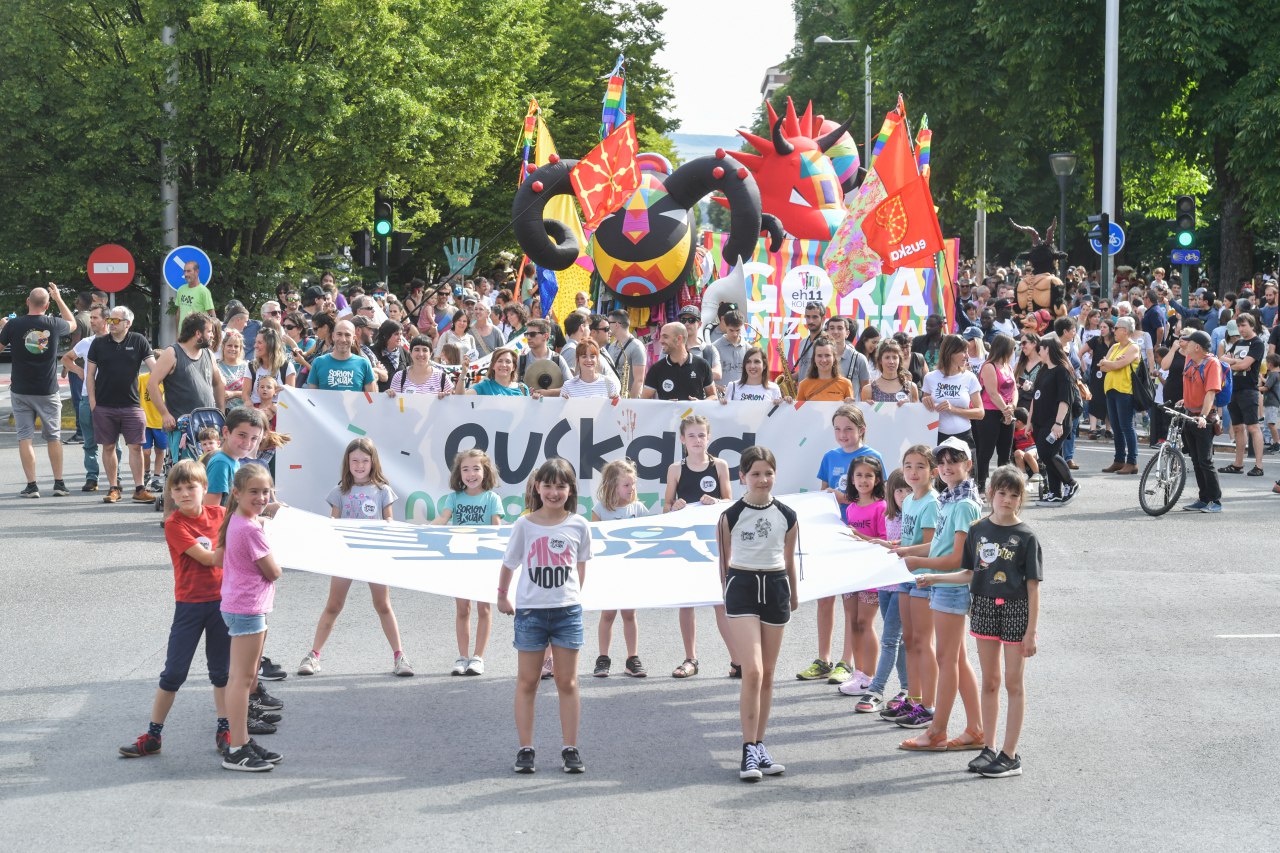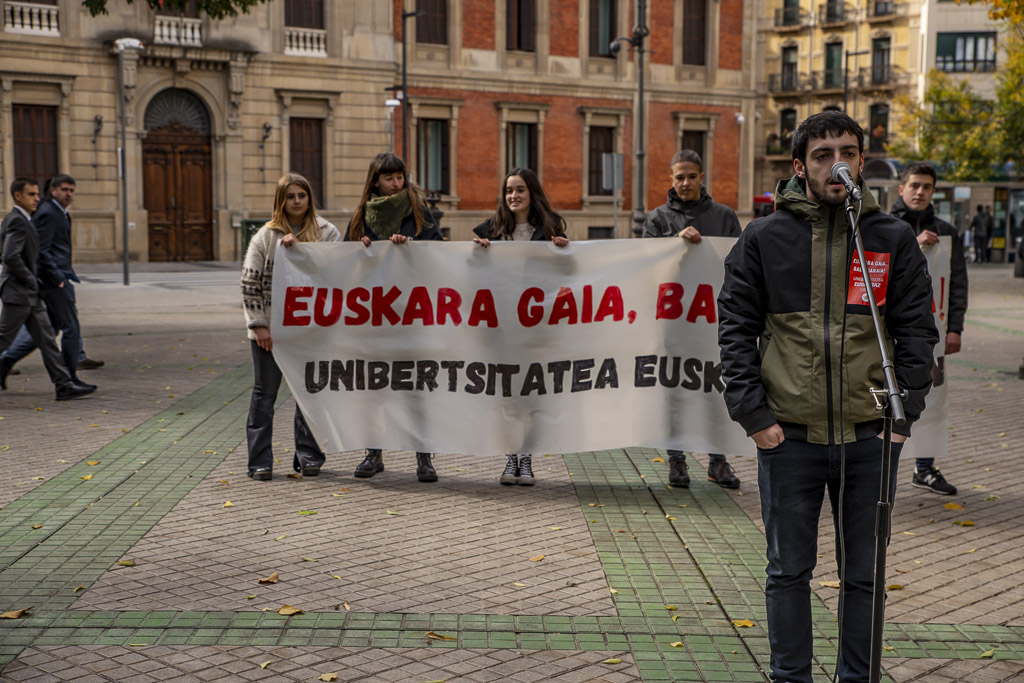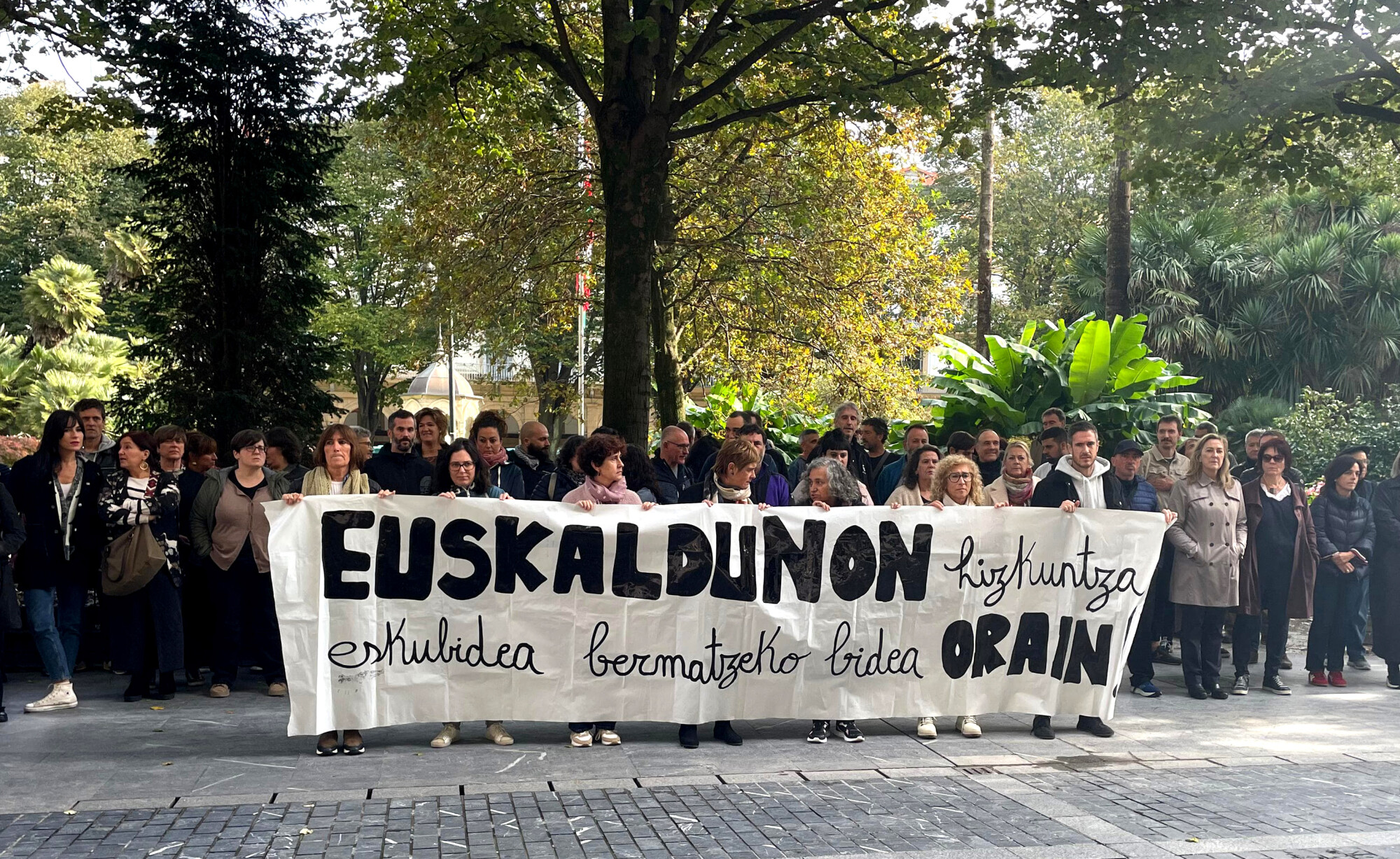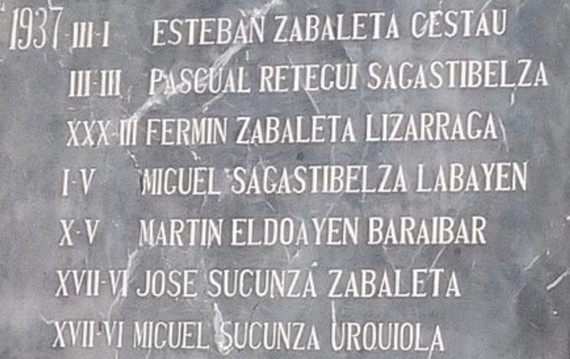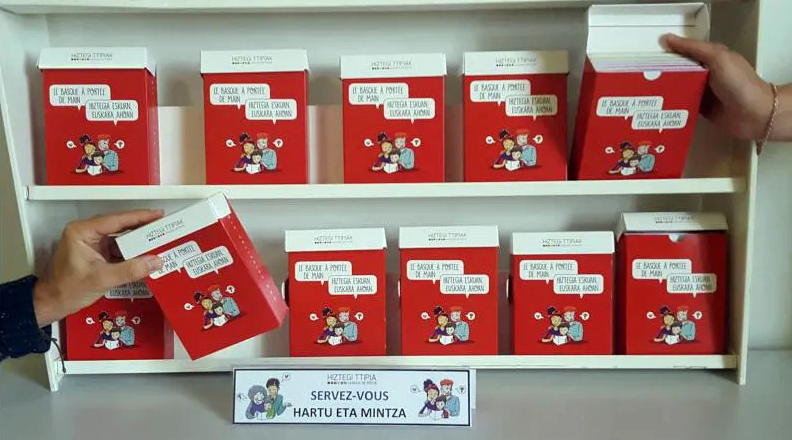Do you know how to say ‘dragonfly’ / ‘libellule’ in Basque?
- Iñaki Aranburu Mosque (Alegia, Gipuzkoa, 1959) is a member of the Society of Aranzadi Sciences, dentist and naturalist photographer. It has received in Basque the names of 84 skewers and witch needles residing in the Iberian Peninsula. The environmental technicians Mosque and Jon Frahier who have prepared the proposal are waiting for the final step in drawing up the official list. He has confessed that vasophils need good news: "Because it's all bad news. They can be said in this way: 'They're Martians, but they're doing something.'

Tigre-burruntziaz idatzitako artikulua: Kosk egiten ez duen tigrea
Intsektuen inguruan hizketan Egonarria podcastan: Zomorroak | Iñaki Mezquita Aranburu (Aranzadi)
The butterfly sits on the flower. Start to zoom in the camera, focus it and... sast! Another bug has come and eaten the butterfly. So he met Iñaki Mosque the brooches and the sorcerers. He began to chase Pinpilinpaux and on the front line appeared these insects of the Odonata Order, daring and full of energy. He started photographing at age 22, and to this day, 65, he's nailed and researched skewers in photographs. He's not a biologist by profession, he's been a professor of physical education in Primary Education, and he's been learning the world of insects on his own. At first, the brooches and sorcerers only paid attention aesthetically, but he soon realized that he had to do paparazza: "If you do not know the behavior and way of life of the animal, you can hardly do a good job in photography. Paparazzias do: observe the person's behavior, observe it and dance! It catches! ". He has learned from books and explained to us that "unfortunately" he has found an untapped world: "There was no one there, and I somehow took responsibility for doing something." He comments two fellow travellers who have worked for years on the research: Francisco Javier Ocharan, professor and entomologist at the University of Oviedo, and the Biscayan illustrator Ángel Domínguez. After the death of his two friends, he feels loneliness to continue his research: "Suddenly two legs have fallen and I've been left with one."
Not the same are the brooches that the sorcerers when
we asked him how he named these insects of the Odonata Order in Basque, he has given us an important first information. These insects are divided into two suborders, one anisopteran and the other zigopteran. In Spanish and French Each suborder has a name. The first are the dragonfly / libellule and the second devil’s booths / demoiselles. In Euskera, on the contrary, we do not separate the two groups and use synonyms in any way. The mosque distinguishes between dragonfly/libellule and devil’s booths/demoiselles. It is very clear why this should be the case. When he starts to give an explanation, the journalist, looking at nothing from the bar bench, tries to imagine what the expert said: "The argument is very simple. We all know what a brooch is, it was hanging in the fire to provoke it. When it's very cold, the stalactics that are produced by the cold are also called brooches. Insects called brooches usually hang straight, vertically. With a witch needle, I can imagine a needle in a horizontal position. The latter rest on six
legs." Horizontality and verticality are not the only characteristic that distinguishes the two Suborders. The brooches are stronger and the anterior wings are narrower than the later ones. The witch needles are slender and the wings are equal in front and back, in total four. The brooch has the rounded head and the eyes fill almost everything, while the witch needle has the eyes on both sides.
Having heard these explanations, the journalist confirms that the normal Basque does not distinguish between the brooches and the sorcerers. The mosque tells us that not only does it happen in street language, but it's also collected in dictionaries. Not dictionaries, but Wikipedia.
84 names in the Iberian
Peninsula and the Canary Islands there are 84 dentiates; in the Basque Country there are about 64-65. All of them have been given the name in Basque. It has taken into account "those who are here right now" and "those who can be in the medium term." It says that the insect is a living world, some go up and others go down, "above all up, Africans." That's why the 84 animals are called in Euskera. This list contains a new species that was discovered by the Mosque itself in 2015, absent from the Iberian Peninsula and common in Europe across the Pyrenees. It entered through the Bidasoa by Gipuzkoa about 50 kilometers and has reached Segura. It is called Small Ganchudo (Onychogomphus forcipatus). But it's not the only finding of Mosque. In 2012 he entered the north and found a subspecies he hadn't seen anywhere else on the peninsula: white tail brooch (Orthetrum albistylum).
The scientific names of insects have been the axis on which compensation has been established in Euskera. Some are in Greek and almost all in Latin. It is fixed in its meaning when choosing the payment. In addition, he has observed and received the names of French, English, Catalan and Portuguese, as well as those of Spanish, where they existed. At first he recognizes that it was a "sad job" because he worked alone: "I didn't have anyone to discuss and decide."
She started alone, but she's had enthusiastic comrades. Kepa Altonaga, Asier Sarasua, Martxel Aizpurua, Eñaut Agirre, Iñaki Sanz Azkue, Ion Garin, etc. Jon Frahier has been an environmental technician who has been by his side since the beginning and says that the job is the "puppy" of both. Mosque has praised the involvement and work of Asier Sarasua.
He's had some quarrel with the philologists. Mosque thinks of using and receiving more synonyms than they propose: "I think there's a huge richness in the synonyms we've found, and that can't be lost." Although a synonym is used to designate Families of Species, the alien proposes not to lose others they have found. For example, it has received several compensations to express the genus Coenagrionidae: Witch needles, Stallion needles, Needles and Water needles. As for the richness of synonyms, it is not the same to use a helicopter than burduntzi. The word chosen shall be broken, but a burduntzi shall also be included in the Annex: "Some species are metallized and saying skewers -- iron -- it's a shame to miss out. Place an asterisk and book." They would like them to be published in the Nomenclature with all of them collected. Waiting for the last blessing After five years in this workshop, Mosque and Frahier have finished the Nomenclature and have shown their proposal and approval to
biologists
and philologists in the area. However, there is a lack of formality. The last blessing would be made by the Basque Government, the Basque Department of the Basque Institute of Public Administration. Mosque and its fellow travellers have the date of submission of the proposal pending. The Alegiarra has pointed out that its nomenclatures are also being worked out in other fields, such as botanists, amphibians and reptiles. Meanwhile, the list of names of dragonflies and sorcerers will be published for the first time in ARGIA, in the internet adaptation of this report, and in the newsletter of the Aragonese Society of Entomology. Although we will be surprised, they have recently completed their nomenclature in Spanish, and with the excuse of publishing it they will also receive in the June newsletter of the Aragonese Association in both Basque and Galician. The mosque does not believe that publication in the newsletter is the first and last step. Far from being a mere enumeration, through arguments and justifications, of counting the whole process and providing explanations in the field of philologists, the truth is that it is in favour of drawing an article or a publication in depth. He considers that the journal Munibe of the Society of Aranzadi Sciences would be a good space. In addition to these two windows, I would like the ordinary media to echo, "We must give it to society. It wouldn't make sense to say it a year from now on in Munibe, 'a, yes, it came out in Munibe...'" The Basque Nomenclature will have a new window: The European Congress of Dentistry, to be held from 25 to 28 June in Seville, Spain, will also be presented.
We have talked about Castilian, Galician and Euskera, but among all it is Catalan the main one. The Mosque says they have a great tradition in collecting and studying names: "They have a long way to go. On the platform where the citations of these animals are made, there are 1,500 members. The knowledge management model on these animals should be a mirror for us. We are making the way, willingly! ".
Euskaraldiaren atarian, beste behin, Pantailaldia egingo da. Maiatzaren 6tik 15era iraungo du, eta euskarazko ikus-entzunezkoen kontsumoa sustatzea izango da helburua.
Baina non gaude, non dago euskara ikus-entzunezkoen mundu zabalean, nora goaz? Zein hutsune, zein erronka... [+]












